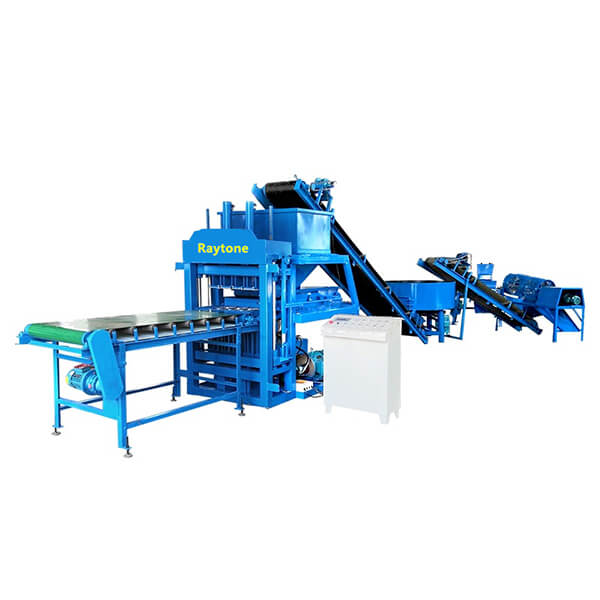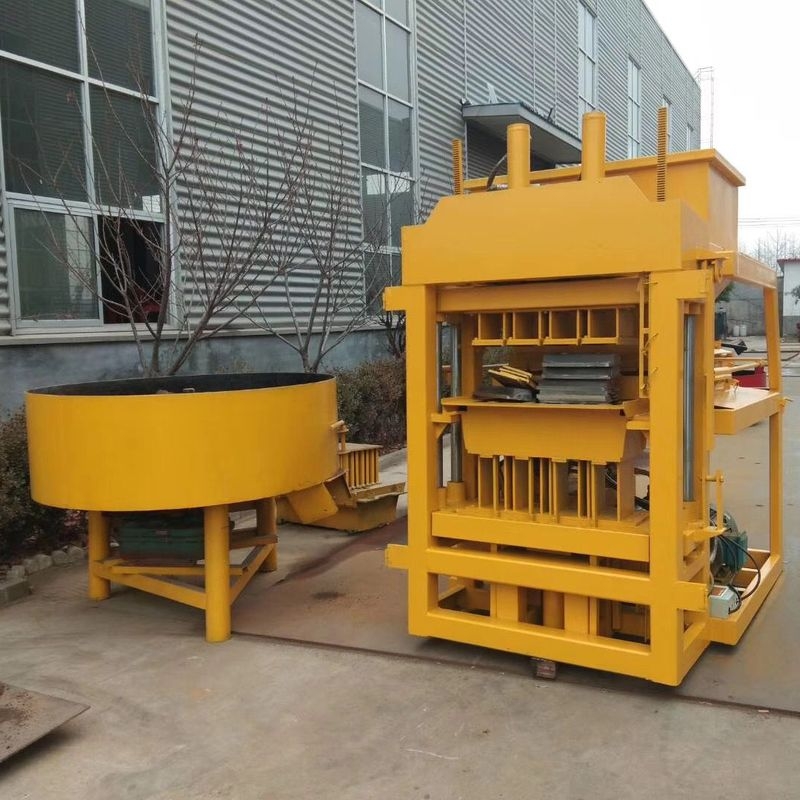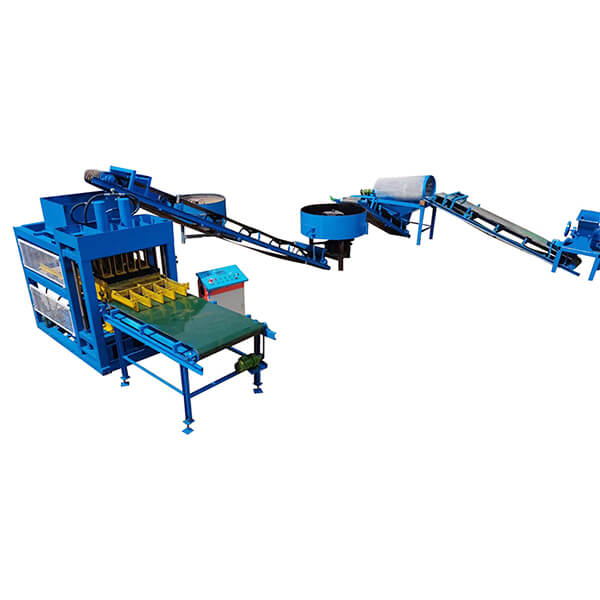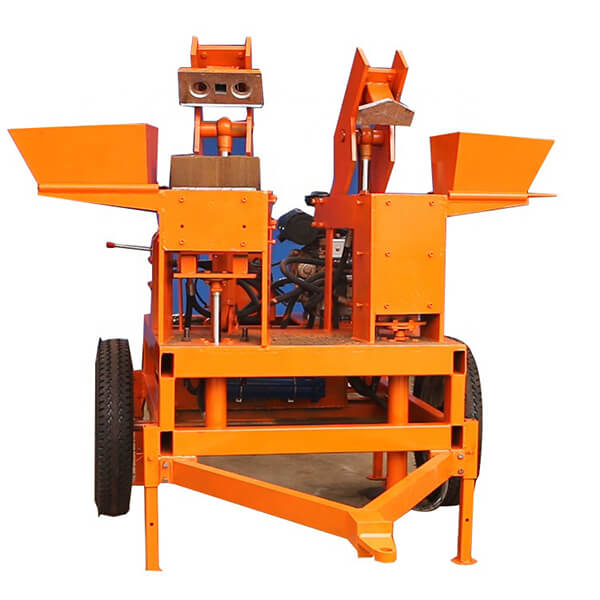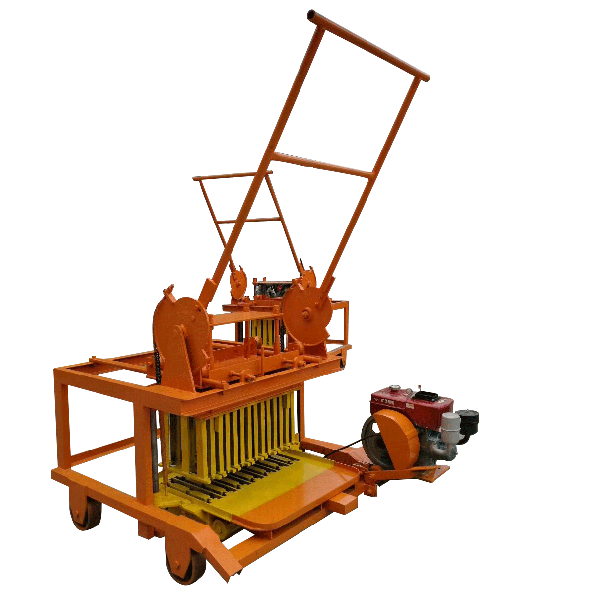Manual block machines are essential tools in the construction industry, offering a cost-effective solution for producing various types of concrete blocks. The working principles of manual block machines, such as the QT4-35 manual brick making machine, involve a series of mechanical processes that transform raw materials into finished concrete products. These machines operate on a simple yet efficient mechanism, utilizing human power and leverage to compress the concrete mixture into molds, resulting in uniform and durable blocks. Understanding these principles is crucial for anyone involved in small to medium-scale construction projects or looking to start a block-making business with minimal initial investment.

Components and Setup of Manual Block Machines
Main Frame and Structure
The main frame of a manual block machine serves as the backbone of the entire system. Typically constructed from robust steel, it provides stability and support for all other components. The frame is designed to withstand the pressures exerted during the block-forming process, ensuring longevity and consistent performance. In the case of the QT4-35 manual brick making machine, the frame is engineered for easy assembly and disassembly, making it ideal for both stationary and mobile operations.
Mold Box and Interchangeable Molds
At the heart of the manual block machine is the mold box, which houses interchangeable molds. These molds are crucial in determining the shape, size, and type of blocks produced. The QT4-35 model supports a variety of mold types, allowing for the production of hollow blocks, solid bricks, paver bricks, and even curbstones. The ability to switch between different molds enhances the machine’s versatility, catering to diverse project requirements without the need for multiple specialized machines.
Compression Mechanism
The compression mechanism is what gives manual block machines their forming power. It typically consists of a lever system connected to a press plate. When operated, this mechanism exerts significant pressure on the concrete mixture within the mold, compacting it to form solid, well-defined blocks. The design of this system in manual machines like the QT4-35 focuses on maximizing leverage, allowing operators to achieve high compression forces with minimal physical effort.
Step-by-Step Operation Process
Material Preparation and Mixing
The first step in the block-making process involves preparing the raw materials. This typically includes a mixture of cement, sand, gravel, and water in proportions appropriate for the desired block strength and characteristics. For manual operations, mixing is often done by hand or using a small concrete mixer. The consistency of the mix is crucial – it should be moist enough to bind well but not so wet that it sticks to the mold or loses shape after compression.
Mold Filling and Compression
Once the mixture is ready, operators fill the mold box with the prepared concrete. This step requires skill to ensure even distribution and the right amount of material for each block. After filling, the compression mechanism is engaged. In manual block machines like the QT4-35, this involves pulling a lever that brings down the press plate. The pressure applied compacts the mixture, forcing out air pockets and creating a dense, sturdy block. The amount of pressure and duration of compression can significantly affect the quality of the final product.
Demolding and Curing
After compression, the newly formed blocks are carefully removed from the mold. This process, known as demolding, requires gentle handling to prevent damage to the fresh blocks. The blocks are then placed on pallets or curing racks. Proper curing is essential for achieving optimal strength and durability. This typically involves keeping the blocks in a controlled environment, protected from direct sunlight and wind, and maintaining proper moisture levels for several days. The specific curing time and conditions may vary depending on the block type and environmental factors.
Advantages and Considerations of Manual Block Machines
Cost-Effectiveness and Accessibility
One of the primary advantages of manual block machines like the QT4-35 is their cost-effectiveness. With prices ranging from $5,000 to $15,000, they represent a low-barrier entry point into block production. This affordability makes them particularly attractive for small businesses, startups, and rural development projects. Additionally, their simple design translates to lower maintenance costs and easier repairs compared to more complex automated systems.
Versatility and Customization
Manual block machines offer remarkable versatility. The ability to change molds quickly allows producers to switch between different block types, sizes, and shapes without significant downtime. This flexibility is invaluable for businesses looking to cater to diverse market demands or for projects requiring various block specifications. The QT4-35, for instance, can produce everything from standard hollow blocks to specialized paver bricks, adapting to changing project needs with minimal additional investment.
Production Capacity and Labor Considerations
While manual block machines have lower production rates compared to automated systems, they can still achieve significant output. The QT4-35, for example, can produce 2560–3290 8-inch blocks in an 8-hour shift. This capacity makes it suitable for small to medium-sized projects or as a supplementary production unit in larger operations. However, it’s important to consider the labor-intensive nature of manual machines. They typically require a team of 4-5 workers for efficient operation, including roles for mixing, mold filling, machine operation, and block handling. This labor requirement can be an advantage in areas with high unemployment, creating job opportunities, but it also necessitates careful workforce management and training.
Conclusion
Manual block machines, exemplified by models like the QT4-35 manual brick making machine, offer a practical and accessible solution for concrete block production. Their simple yet effective working principles make them ideal for various applications, from small construction projects to entrepreneurial ventures in block manufacturing. By understanding the components, operation process, and considerations involved, users can maximize the potential of these versatile machines, contributing to sustainable and cost-effective construction practices worldwide.
Contact Us
At Raytone Machinery, we’re committed to providing top-quality manual block machines that meet your specific needs. Our range of products, including the efficient QT4-35 manual brick making machine, combines reliability, versatility, and cost-effectiveness. Whether you’re starting a new block-making business or looking to expand your production capabilities, we have the solution for you. For more information about our manual block machines or to discuss your specific requirements, please contact us at hazel@raytonechina.com. Let us help you build a stronger foundation for your construction projects.
References
- Johnson, A. (2022). Manual Block Making: Techniques and Best Practices. Construction Technology Review, 15(3), 78-92.
- Smith, B., & Brown, C. (2021). Comparative Analysis of Manual and Automated Block Production Methods. Journal of Sustainable Construction, 8(2), 145-160.
- Lee, D. (2023). The Economics of Small-Scale Block Manufacturing. International Journal of Construction Management, 12(4), 301-315.
- Garcia, M., & Rodriguez, L. (2022). Quality Control in Manual Block Production: A Case Study. Building Materials and Structures, 7(1), 55-70.
- Wilson, E. (2021). Sustainable Block Making: Manual Methods for Developing Countries. Journal of Green Building, 6(3), 210-225.
- Thompson, R. (2023). Innovations in Manual Block Machine Design. Construction Equipment Technology, 9(2), 178-193.


